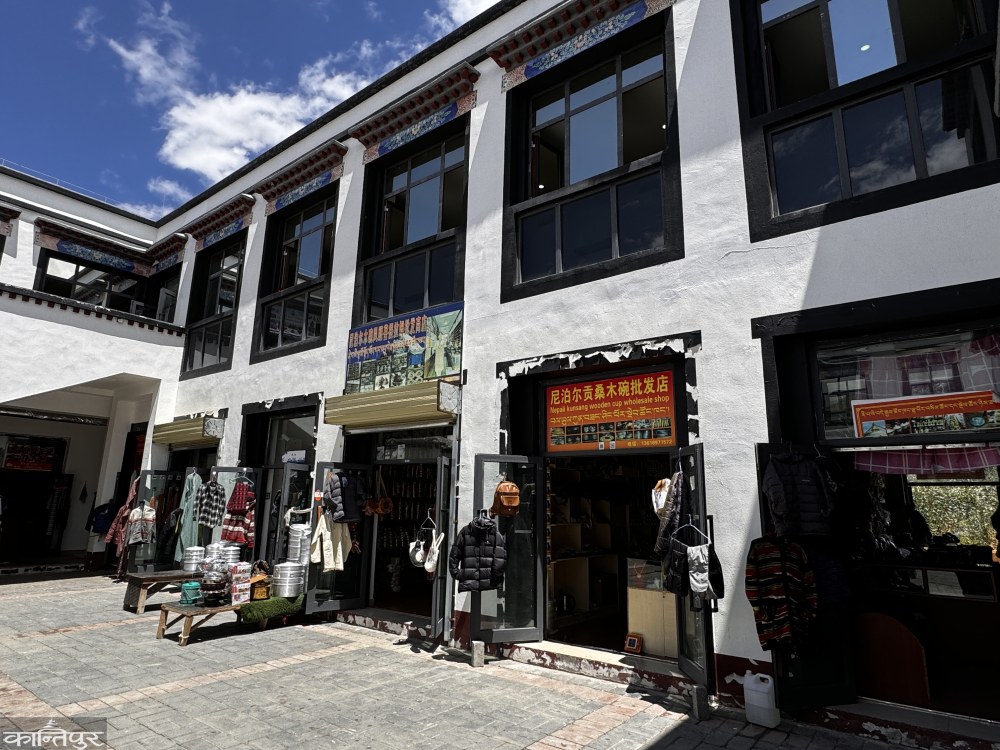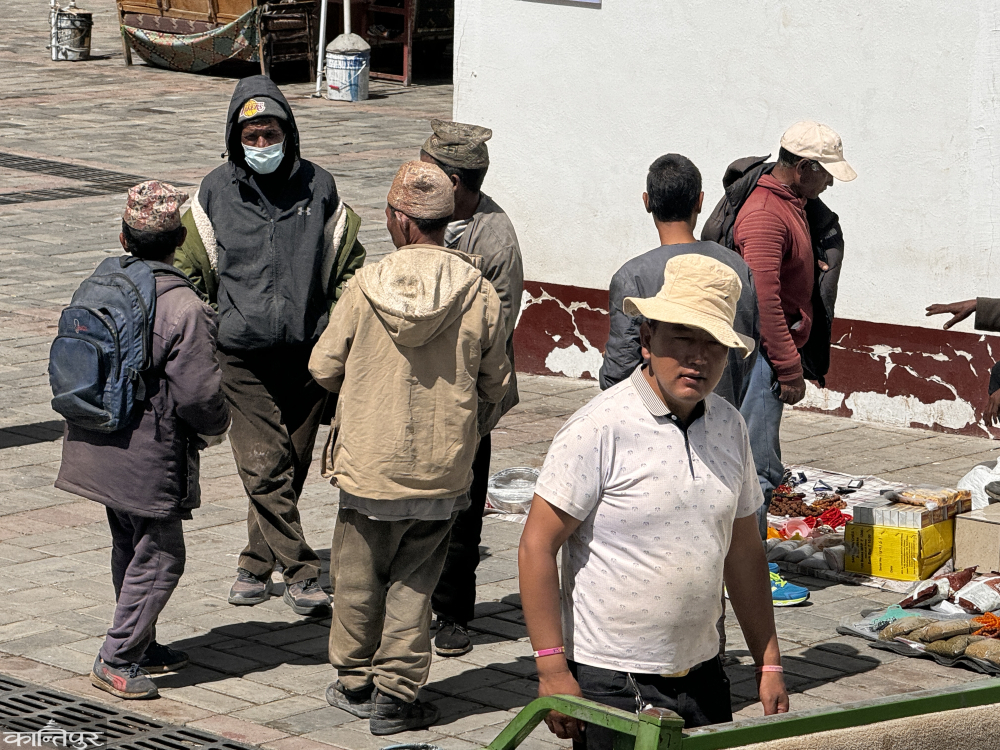After the construction of solid infrastructure in Fulan, Tibet, Nepalese businessmen of three districts are comfortable

We use Google Cloud Translation Services. Google requires we provide the following disclaimer relating to use of this service:
This service may contain translations powered by Google. Google disclaims all warranties related to the translations, expressed or implied, including any warranties of accuracy, reliability, and any implied warranties of merchantability, fitness for a particular purpose, and noninfringement.

Highlights
- Businessmen said that the Tibetan government has built different styles of shop structures targeting the three districts of Nepal, Humla, Darchula, and Bajhang.



Nepalese businessmen have become comfortable after China has built solid physical infrastructure in Humla's Hilsapari, Tibet's Fulan. The western part of Tibet is bordered by the Hilsa border of Nepal's Humla. In the past, when the infrastructure was lacking in Fulan, the Nepali people were uncomfortable with the place to do business.

According to the Nepali Consul General in Lhasa Navraj Dhakal, China has given high importance to the three Nepal-China international checkpoints Kerung-Rasuwagadhi, Tatopani-Changmu and Burang-Yari. Being an ancient border, it has naturally become a border market. It is understood that China has encouraged border trade by creating a market structure,' said Consul General Dhakal to Kantipur, 'this is a sign of openness shown by China.'
Tibet's Ali Prefecture, Fulan County divides the border between India and Nepal, and Fulan (Burang) port is China's first-class port.
One of the important foreign trade routes embraced by the Tibet Autonomous Region, this Thang border trade market has a history of more than 500 years. Trade structures of other countries including Nepal have been established in the border area. 
According to Nepali businessmen, the construction work of the commercial building was completed during the Covid-19 epidemic. Pachung Lama, a businessman, said that till the previous 3 years, Nepali businessmen were able to do business from the building for free, but in the subsequent period, they have taken a flexible policy of charging rent based on the business conditions, so there is no problem. Because
is cheap, he has hired three shutters. He said, "I have been doing business since childhood. I have three shops here. Since it is a neighboring country, it is also easy to come and go from Nepal. 
Photos: Lakshmi Lamsal/ Kantipur
Goods from three districts of Nepal reach the Tibetan Fulan border market. Humla district wooden items, Tibetan traditional utensils, daily kitchen items are found in the border market . Similarly, materials made of bamboo, herbs and food grains have arrived from Bajhang district, while more Indian materials are brought from Darchula, a district connected to India. It includes Gudh Mishri, Indian clothes, woolen clothes, food and so on.
Jagat Tamang, a young businessman who says that his business has been maintained on the Tibetan border since the time of Baubaje, has been handling his father's place for the past 20 years. He used to do business in tents, huts and houses made of mud, but now he has felt a change. This market has now become a place to bring and sell not only Nepali handicrafts but also foreign goods. Narrating his experience of raising his standard of living, he said, "Earlier, he was doing business from a tent, a tent, a mud house, and now he has a shop in a house with an elevator." The style of business has changed a lot .' 
Businessmen said that the Tibetan government has built different styles of shop structures targeting three districts of Nepal. The building has been divided into three parts namely Humla, Darchula, Bajhang. With the policy of attracting Nepali businessmen and making the border market viable, Tibet has provided cheap infrastructure to businessmen. According to
Tamang, the shutter rent in the building has been contracted for 5 years at the rate of 8 yuan per square meter for the first floor and 15 yuan for the second floor. However, he said with a laugh that it would be expensive for the traders who are trading for free in the clay jupra.
Border business Nepalis consider China's Fulan as their second home. Generation after generation seems to be connected with Fulan. Furbu Tshiring told the Chinese media, "The standard of living has risen." I have now not only got my own store, but have also become an 'Internet celebrity store.' Similarly, Sonam Rinchen, who came from Humla to do business, said that there is a good market for Buddhism-related materials.
The Nepal-China Hilsa border has a centuries-old trade history. After advancing the BRI, China is intensifying the reform of the Tibetan Fulan entry-exit border inspection center, the law, management and service capacity of the port. In addition, to cooperate with Humla district of Nepal in the fields of tourism, culture and trade, Chinese herbal medicine, natural drinking water, etc., and to support local economic and social development, two-way cargo and staff have been managed at Phulan port in May 2023. 
A new airport is currently under construction in Fulan County, Tibetan Ali Prefecture. Traffic is expected to be more efficient after the airport is operational. Chinese officials have analyzed that the Fulan border checkpoint will give strength to the construction of the BRI and the South Asian Land Corridor, as well as support the expansion of the Friendship Church of Tibet.
 प्रकाशित : भाद्र ५, २०८१ १४:१२
प्रकाशित : भाद्र ५, २०८१ १४:१२

 २५.१२°C काठमाडौं
२५.१२°C काठमाडौं














